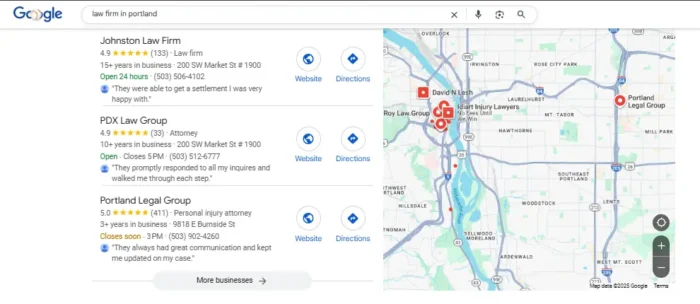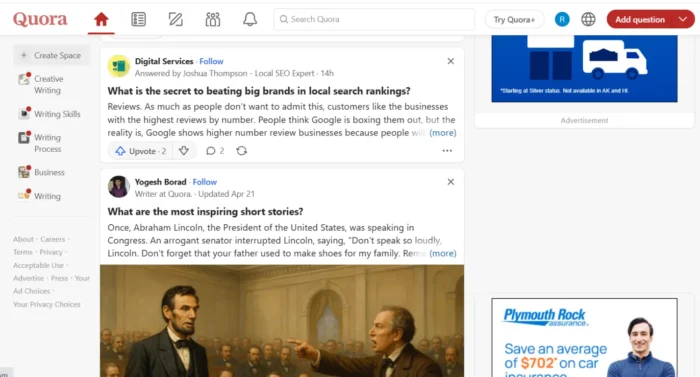UPS Plane Crash: What the Black Box Revealed So Far
Alright, y'all. Buckle up because the UPS plane crash in Kentucky is not just another aviation incident. This one hit hard, and it hit close to home, especially for folks in Louisville. A UPS cargo plane crashed shortly after...

Alright, y'all. Buckle up because the UPS plane crash in Kentucky is not just another aviation incident. This one hit hard, and it hit close to home, especially for folks in Louisville. A UPS cargo plane crashed shortly after takeoff from the Louisville Muhammad Ali International Airport on Tuesday afternoon, and let me tell you, the black smoke and sirens were just the beginning. The plane, part of the UPS Worldport fleet, wasn’t carrying passengers but was packed with cargo and had three crewmembers on board. What’s now unraveling is not just a timeline of a crash but a deeper dive into what the black box revealed and what it all means for the air cargo industry.
We’ve seen plenty of plane crashes, but a UPS cargo plane crash like this? It shakes confidence in freight transport aircraft safety, especially when it happens near a major shipping hub like Louisville, Kentucky. According to early reports, including those from the Louisville Metro Police Department and the Federal Aviation Administration, the incident involving UPS Flight 2976 was nothing short of alarming. The crash occurred near areas north of the airport, around Grade Lane and Fern Valley Road, and within minutes, black smoke filled the air. As the investigation continues, the role of the National Transportation Safety Board becomes more important than ever.
What Exactly Happened With the UPS Plane Crash
 Smoke from the UPS Plane Crash in Louisville, Kentucky
Smoke from the UPS Plane Crash in Louisville, KentuckySo let’s rewind. On Tuesday, at around 9:15 p.m. local time, UPS Flight 2976 took off from Louisville Muhammad Ali International Airport. The UPS cargo plane was supposed to make its way toward Inouye International Airport in Honolulu. But shortly after takeoff, things took a dark turn. The plane crashed near Louisville, Kentucky, within minutes of being airborne. Data from airport security video indicated that the plane's left engine caught fire and detached from the wing during the takeoff roll. This wasn’t just any routine departure; it turned into a developing story that made national headlines.
First responders, including the Louisville Metro Police Department and other agencies, rushed to the crash site. Huge plumes of black smoke could be seen rising into the sky, and a large fire was reported by nearby residents. The crash site was near key airport property and areas north of the Louisville airport. This incident involving a UPS cargo plane wasn’t just a blip; it caused temporarily suspended operations at the airport and disrupted both arriving and departing flights. Families affected and those near Louisville were told to shelter in place due to concerns over smoke and fire hazards.
UPS confirmed that three crewmembers were on board, and sadly, all were killed. The company expressed its condolences, assuring that it was cooperating fully with the ongoing investigation. The National Transportation Safety Board and the Federal Aviation Administration are now leading to find out what exactly went wrong. While it’s too early to pin down the cause, what’s clear is that this UPS plane crash is one of the most serious aviation incidents to hit Kentucky in years. It’s tragic, it’s shocking, and it has the whole nation watching.
Location Breakdown: Why Louisville, Kentucky Is Key
 Louisville, Kentucky
Louisville, KentuckyNow, let’s talk about why this location matters. Louisville isn’t just another dot on the map. It’s the heart of UPS operations, home to the massive UPS Worldport hub at the Louisville Muhammad Ali International Airport. This facility handles thousands of arriving and departing flights every week. So when a UPS plane crashed near this critical hub, it wasn’t just bad for UPS, it was a major disruption for global shipping.
A UPS plane crashed shortly after takeoff near Louisville International Airport on November 4, 2025. The crash site near Grade Lane and Fern Valley Road is just outside airport property. Locals near Louisville heard the boom, saw the smoke mark in the sky, and felt the emergency unfold in real-time. Reports confirmed that black smoke was seen billowing from the site, and first responders had to navigate tricky terrain to reach the wreckage. With the crash so close to a key airfield and shipping facility, operations were temporarily suspended to manage safety concerns. Not only did this impact departing flights but it also slowed arriving flights for several hours.
Let’s not forget, this area is a busy zone with heavy freight traffic. The fact that the UPS cargo plane crashed shortly after takeoff raises questions about air traffic procedures and runway safety at Louisville Muhammad Ali International. It also put a spotlight on the nearby neighborhoods that felt the impact. For folks in Louisville, Kentucky, this wasn’t just news; it was a loud and terrifying wake-up call. And trust me, the freight industry is watching every move that comes next.
READ ALSO: Louvre Museum Robbery: They Stole WHAT from Paris?!
The Aircraft: McDonnell Douglas MD and Its Track Record
 McDonnell Douglas MD-11
McDonnell Douglas MD-11Let’s break down the bird that went down. The aircraft involved in the crash was a McDonnell Douglas MD-11, a type of freight transport aircraft widely used by cargo carriers like UPS. In fact, the aircraft was carrying around 38,000 gallons of fuel when it crashed. These planes are built for heavy loads and long hauls, and while they’ve had a pretty solid record, this crash definitely raises eyebrows. This wasn’t the first time a UPS plane crashed involving a McDonnell Douglas, and unfortunately, it probably won’t be the last unless we get to the bottom of what happened.
The MD-11 has been around since the '90s, and while it’s a workhorse, it’s also known for being a bit tricky to handle during landing and takeoff. That's not just me throwing shade — it's a known issue in aviation circles. In this case, the UPS cargo plane was taking off from Louisville Muhammad Ali International Airport when things went south, fast. Witnesses reported hearing strange engine sounds and seeing flames before the plane crashed near Louisville.
UPS has been using this type of aircraft for years in their cargo fleet, especially for long-haul international deliveries. And while the plane was headed to Inouye International Airport in Honolulu, it barely got airborne before tragedy struck. This adds yet another chapter to the long and complicated history of the McDonnell Douglas aircraft family. Let’s be real — when it comes to safety, even the most dependable aircraft can become deadly under the wrong conditions.
The Crew: Who Was On Board When the Plane Crashed
 Death Toll as of November 5, 2025
Death Toll as of November 5, 2025Let’s talk about the humans behind the flight — because this wasn’t just an aircraft crash, it was a human tragedy. UPS confirmed that three crew members were on board Flight 2976, and sadly, all were killed in the crash. These weren’t just employees, they were seasoned pilots and crew responsible for managing high-stakes freight transport flights. The crash has deeply affected their families, their coworkers, and the entire UPS community.
According to officials and breaking news reports, the crash happened so fast that the crew likely had very little time to react. There are early signs from the black box that suggest the pilots tried to communicate a distress situation before the crash, but full details haven’t been confirmed yet. Louisville Mayor Craig Greenberg extended his condolences, calling the incident heartbreaking for the entire city. The Louisville Metro Police Department also emphasized how traumatic the scene was for first responders.
It’s easy to talk about aircraft and crash sites, but it’s important to remember the people involved. These crew members were doing their jobs, trying to take off safely from Louisville airport to head toward Honolulu. Their loss is not just a statistic — it’s a gut punch to families, friends, and colleagues. Kentucky Gov Andy Beshear also spoke out, pledging full support to the families affected and promising transparency as the investigation unfolds.
What We Know About the Black Box So Far
 Aerial View of the Aftermath
Aerial View of the AftermathAlright, now to the juicy part — the black box. This little device is basically the gossip queen of aviation, recording every beep, every click, every “oh no” moment in the cockpit. After the UPS plane crashed, the National Transportation Safety Board made recovering the black box a top priority. And yes, they found it. Early analysis has already given us some key insights, and it’s not looking good for mechanical systems.
From what’s been released so far, the black box suggests there was a sudden and critical failure during takeoff. The pilots may have tried to recover the aircraft, but things spiraled too quickly. There were signs of a possible engine failure or fuel issue, though the exact cause hasn’t been confirmed. What we do know is that communication was cut off shortly after the aircraft left the ground, and that aligns with reports of the plane crashing shortly after departure.
The data is now being carefully analyzed by aviation experts and investigators. It’ll take weeks before we get the full story, but what’s already trickling out is enough to raise serious questions. The Federal Aviation Administration is working closely with the NTSB, and multiple other agencies are involved in combing through every second of recorded data.
What is generally know is that the McDonnell Douglas MD-11 freighter experienced a major malfunction during its takeoff roll, with a fire erupting in the area of the left wing and the left engine detaching before leaving the runway. The black box may be small, but it’s might spill some major truths about what really happened on that ill-fated UPS flight.
READ ALSO: Baldwin Car Crash — Brothers in a Wild Tree Smash
Smoke, Fire, and That Crash Site
 Fire in the Crash Site of the UPS Plane in Kentucky
Fire in the Crash Site of the UPS Plane in KentuckyLet’s not sugarcoat it — the crash site was a nightmare. When the UPS plane crashed, it left behind a trail of black smoke, burning fuel, and debris that stretched across airport property near Louisville. Local residents near Grade Lane and Fern Valley could see thick clouds of black smoke rising into the sky. Fire crews and first responders rushed in, facing intense heat and dangerous conditions.
The fire that followed was massive. Witnesses described a large fireball erupting as the plane hit the ground, which left a terrifying smoke mark on the landscape. Louisville Metro Police confirmed that injuries have been reported, though the three crewmembers sadly did not survive. First responders worked with multiple other agencies to control the flames and secure the area. With fuel spilling and the aircraft in pieces, it was a race against time.
The scene was so intense that operations at Louisville airport were temporarily suspended. Not only were flights delayed, but some incoming aircraft were redirected altogether. Shelter in place alerts were sent out to protect people near Louisville from exposure to smoke and hazardous materials. It was a chaotic, heartbreaking, and deeply alarming moment for everyone involved — one that this community won't forget anytime soon.
The Emergency Response and Investigation
 Federal Aviation Administration Office
Federal Aviation Administration OfficeThe response to the UPS plane crash near Louisville was fast, fierce, and coordinated. Within minutes of the crash site lighting up the sky, local first responders were on the ground — battling fire, managing chaos, and trying to save lives. The Louisville Metro Police Department was one of the first to confirm the crash and coordinate the emergency response. Fire crews worked through the night to contain the large fire caused by the crash, while emergency medical services assessed the situation for injuries. It wasn’t just one team out there — multiple other agencies jumped in to help manage the disaster zone.
The Federal Aviation Administration stepped in almost immediately, issuing statements and confirming that a UPS cargo plane crashed shortly after takeoff. Their role in this is to ensure every regulation was followed and to help the National Transportation Safety Board with key aviation data. The FAA also worked closely with the airport to understand what went wrong with this departing flight. Meanwhile, the National Transportation Safety Board (NTSB) is investigating the crash and has recovered the cockpit voice recorder and flight data recorder for analysis..
As the black smoke cleared, it became obvious that this wasn’t just a small-scale emergency. Louisville Metro Police blocked off roads around the crash site, while crews assessed damage to airport property. The coordination between city, state, and national agencies showed how serious the incident was. It wasn’t just a Louisville issue — this crash drew eyes from across the country, especially with a UPS cargo plane involved. And let’s be real, the freight industry doesn’t like this kind of attention.
How This Affects Flights at Louisville Airport
 Louisville International Airport
Louisville International AirportWhen a plane crashes that close to an airport — especially one as busy as the Louisville Muhammad Ali International — expect major disruptions. After the UPS plane crashed, the airport was forced to temporarily suspend operations. Arriving and departing flights were either delayed, diverted, or flat-out canceled. The Louisville airport is a central hub for UPS, and when a plane crash like this happens, it throws a wrench into everything. The airfield had to be cleared, investigated, and made safe before anything could return to normal.
It wasn’t just passengers who were affected. Cargo schedules were blown up too, which meant delays in package deliveries, especially for customers relying on UPS Worldport. With the crash site sitting near airport property and areas used for freight movement, operations had to be shut down to keep everyone safe. The Federal Aviation Administration also placed restrictions on air traffic while the investigation was underway. That meant no shortcuts, no workarounds — just grounded planes and delayed schedules.
The ripple effects were felt not just near Louisville but across the country. With such a huge volume of packages moving through the Louisville airport every night, the impact was wide and fast. Ground operations were also paused to allow investigators to work and to clean up fuel and fire damage. It was a logistical nightmare that reminded everyone just how critical Louisville is to UPS operations. And trust me, the company is feeling that pain right now.
READ ALSO: White House Demolition: For a Ballroom?! Seriously?!
Families Affected and Community Response
 Governor Andy Beshear
Governor Andy BeshearLet’s take a moment for the people this hit the hardest — the families affected by the crash. UPS confirmed that three crewmembers were onboard, and tragically, none of them survived. Kentucky Governor Andy Beshear described the situation as serious and asked for prayers for those affected. He called the crash “devastating” and promised state support for the investigation and the families. He also mentioned how deeply this affected not just the airline industry but the hearts of Kentuckians. Losing crew in a plane crash like this is more than statistics — it’s personal.
Louisville Mayor Craig Greenberg also spoke out, calling the crash site scene “heart-wrenching.” He praised the first responders for their quick action and offered condolences to the families. He emphasized how moments like this remind the community how fragile life is. The mayor also urged people near Louisville to follow safety guidelines while emergency crews cleaned up the site. This wasn’t just another day in Louisville — it was a day of grief and shock.
Because of the black smoke and dangerous fuel leaks, the authorities issued a shelter-in-place alert for all areas north of the airport to the Ohio River after the crash. People stayed inside, especially those living near Fern Valley and Grade Lane. The crash created a hazardous environment that the authorities carefully managed to avoid more injuries. First responders worked around the clock to secure the crash site while keeping the public out of harm’s way. In times like these, Louisville pulls together — and that’s exactly what they did.
Why the Crash Matters to the Freight Industry
 UPS Plane Crash and the Freight Industry
UPS Plane Crash and the Freight IndustryOkay, let’s talk big picture. This UPS plane crash doesn’t just impact one airport — it shakes up the entire freight industry. UPS is one of the largest freight transport aircraft companies in the world. When a UPS cargo plane crashes, it sends a clear message about the risks tied to cargo aviation. This isn’t about passengers; it’s about goods, logistics, and the people who keep it all moving.
The crash of UPS Flight 2976 near Louisville disrupted more than just a few deliveries. It caused massive delays, especially with the hub at Louisville Muhammad Ali International being such a critical point in the network. Thousands of packages were likely caught in the system, and rerouting them isn’t as easy as clicking a button. For a company like UPS that depends on tight schedules, the crash was a logistical bomb. Temporarily suspended operations rippled into other hubs, including places like Inouye International Airport in Honolulu.
And now, the freight industry is asking hard questions. Will there be new safety standards for cargo planes? Are more inspections coming? You bet they’re watching closely. This crash highlights that freight planes — even ones operated by giants like UPS — aren’t immune to catastrophe. Expect updates, possible regulations, and maybe even redesigns in the near future. Because no one wants to see another UPS cargo plane crashed headline again.
The Internet Reacts: Breaking News and Buzz
If you were anywhere near the internet when the crash happened, you know it lit up the timeline like wildfire. The moment it was confirmed that a UPS plane crashed near Louisville, social media went full throttle. People near Louisville posted photos of the black smoke, others shared news alerts, and soon #UPSPlaneCrash was trending. This was breaking news in real time, and folks couldn’t look away. The developing story picked up steam fast across platforms.
FROM THE UPS PLANE CRASH.
THIS WAS ON MY SIDE PORCH. pic.twitter.com/MGQQWmC6OL
— COUSIN BEEF (@BEEFTCB) November 5, 2025
On TikTok, users shared live reactions and videos from areas north of the crash. Over on X (you know, formerly Twitter), reporters, aviation geeks, and even regular folks near Louisville posted their takes. The most viral clip? Probably the footage of that thick black smoke rising behind airport property. It’s always surreal when tragedy meets the scroll, but that’s where we are. This incident involving a UPS cargo plane crashing during takeoff hit everyone differently — some with fear, others with frustration.
WATCH: Dash cam video shows UPS plane crash in Louisville, Kentucky pic.twitter.com/dZdpus1fxu
— BNO News Live (@BNODesk) November 5, 2025
Even beyond Kentucky, people chimed in. Delayed packages, rerouted flights, and safety concerns brought out all the hot takes. It was more than just “a plane crashed” — it became a conversation about logistics, safety, and how fragile aviation systems really are. Whether it was families who were affected or bystanders near Louisville who were capturing the moment, this crash left a digital footprint. And no doubt, that footprint will live online long after the fire is out.
Key Takeaways and What Happens Next
Here’s the truth: this investigation is far from over. The National Transportation Safety Board and the Federal Aviation Administration are still deep into the process of figuring out what caused UPS Flight 2976 to crash. The black box has started giving answers, but full conclusions will take time. Families affected are waiting. The company is waiting. And the aviation world is holding its breath.
What we do know is this — safety protocols are already under the microscope. UPS, as a major player in freight transport, will likely have to review its procedures, aircraft maintenance routines, and crew training. The future of UPS cargo plane safety depends on what investigators uncover in the coming weeks. It’s not just about this crash; it’s about preventing the next one. From takeoff to emergency response, the whole world is looking at the every detail.
The company will need to support the families affected, address public concerns, and prepare for possible changes in how it operates. And as for us? We keep watching, learning, and holding companies accountable. The Louisville plane crash wasn’t just an accident — it was a wake-up call. Whether you're near Louisville or across the globe, this matters.

 Lynk
Lynk 
































